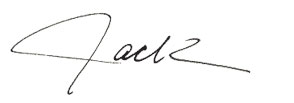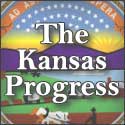Greater KC's Forgotten Basketball Glory

Tune in for what's new in Kansas: It's a web-based news site, and regularly published journal, dedicated to limited government in the great state of Kansas. |
![]()
© Jack Cashill
Published in Ingramsonline.com - March 2012
A game that would forge a piece of Kansas City’s economic identity has become a national obsession.
With one of the nation’s more benign hysterias fully upon us, it might be a good time to recall the all but forgotten role that the greater Kansas City region played not only in spawning March Madness, but also in shaping the very game of basketball.
The pivotal year is 1898. That’s when a newly minted doctor of medicine named James Naismith moved to Lawrence, Kansas, from Colorado. Seven years earlier, in 1891, while searching for an energetic, but not too violent indoor game at his Springfield, Mass., YMCA, Naismith invented the game of basketball.
The idea struck him only after he had run through a dozen or so truly uninspired alternatives. Had he been able to find the boxes he originally conceived as goals, the game might well be known as “box ball.”
At the University of Kansas, Naismith served as a faculty member and part-time coach. Although he invented the dang game, he had little obvious gift for coaching it. He would prove to be the only coach in KU history to emerge with a losing record before being kicked upstairs to become athletic director in 1907.
For a while in those first years of a new century, KU was not even the best basketball team in Lawrence. This Naismith learned the hard way when the “Fighting Indians” of the Haskell Institution threw a newfangled “zone defense” at him and whipped the Jayhawks. Haskell had some decent players at the turn of the century, among them Jim Thorpe, perhaps the best American athlete of all time.
A better athletic director than coach, Naismith hired a doctor of osteopathy named Forrest Clare Allen in 1919 to coach basketball. A Missouri native, Allen had also coached at Baker, Central Missouri State, and even a year at Haskell. Not afraid to be heard, Allen soon picked up the nickname “Foghorn,” then “Fog,” and, thanks to a sportswriter with a creative flair, “Phog.”
Allen would coach for the next 37 years at KU, establish the Jayhawks as the pre-eminent team of the era, win 24 conference championships and three national titles, help launch the national tournament, and get the field house named after him. As medical doctors, Allen and Naismith would do as much to advance the game on the training table as they would on the court.
Allen had a gift for nurturing the kinds of guys who would get even bigger arenas named after them. These included coaching legends Adolph Rupp of Rupp Arena fame, from Halstead, Kan., and Dean Smith of Dean Dome fame, from Emporia. Other Hall of Fame coaches trained by Allen include Dutch Lonborg, later KU’s athletic director, and Ralph Miller from Chanute, who would twice be named national coach of the year at Oregon State.
The most influential coach that Allen and Naismith trained came from Hiawatha, Kan. Although he attended KU for several years in the mid-1930s, he played not a single game for the Jayhawks. His height—5’6”—had less to do with it than this color. John McLendon was part black and part Delaware Indian. KU would not field an integrated team until 1951.
Allen and Naismith took a special interest in McLendon, and McLendon absorbed as much as he could while working for his degree in physical education. After graduating, McLendon took a series of coaching jobs, working his way up through a still-segregated system. En route, he introduced a new wrinkle in the game that came to be known as the “fast break.”
In 1944, while coaching at North Carolina College for Negroes, McLendon helped arrange the so-called “Secret Game,” a match between his team and one from nearby Duke University. At the time, it was still so taboo for black and white players to take the same court in a southern gym that the windows were sealed, fans excluded, and all news of the game shut down. Without the support of the Cameron Crazies, Duke foundered, and McLendon’s fast-breaking team won in a rout.
In the 1920s and 1930s, before the birth of the NBA, the nation’s best post-graduate basketball players played for AAU teams. Given the talent coming out of the area, all the great AAU teams came from a swath of mid-America running roughly from St. Joseph, Mo., to Bartlesville, Okla., with Kansas City at its fulcrum. The city would host the national AAU championship from 1921–1934.
One local team, the McPherson (Kansas) Refiners, after losing in the finals to the South Kansas State Lines in 1935, would go on to beat the Universal Pictures team from Hollywood in the 1936 national AAU championship. In so doing, they earned the right to represent the United States in the 1936 Berlin Olympics.
When the Refiners showed up in New York for a tournament, their trademark approach to scoring awed New York Times sportswriter, Arthur Daley. These “giants,” said Daley, “left the floor, reached up and pitched the ball downward into the hoop, much like a cafeteria customer dunking a roll in coffee.’’ And thus the term “dunk” was born. The American team dunked its way past the world’s best in Berlin, winning every game.
In 1954, McLendon took his talents to Tennessee State. The year before, the Nashville based school became the first historically black college to participate in a NAIA post-season tournament, held then, as now, in Kansas City’s Municipal Auditorium. In 1957, under McLendon’s tutelage, Tennessee State became the first such college to win the NAIA, a triumph the team repeated in 1958 and 1959.
In 1957, the NCAA Final Four was also held at Municipal Auditorium for the sixth time since the tournament was launched in 1939. Municipal would be the site three more times and Kemper once. No city has hosted the event more.
The world was changing thanks to pioneers like Naismith, Allen and McLendon. In 1955, Allen, recruited his first major black basketball talent. In the freshman’s first game in a Jayhawk uniform, he had—though the totals vary by source—40 points, 30 rebounds, and 15 blocked shots on the way to victory. The losing team was the KU varsity. The Wilt Chamberlain era was born.
The same year that Chamberlain came to Kansas, the Athletics brought major-league baseball to Kansas City. The commercialization of air travel made this possible. Air travel, however, also meant that Kansas City could be flown over, and not necessarily traveled through by train. What once happened naturally would no longer happen without a great deal of planning and arm-twisting.
While we are still trying to figure out what went wrong, March makes a good time to celebrate what once went right.


